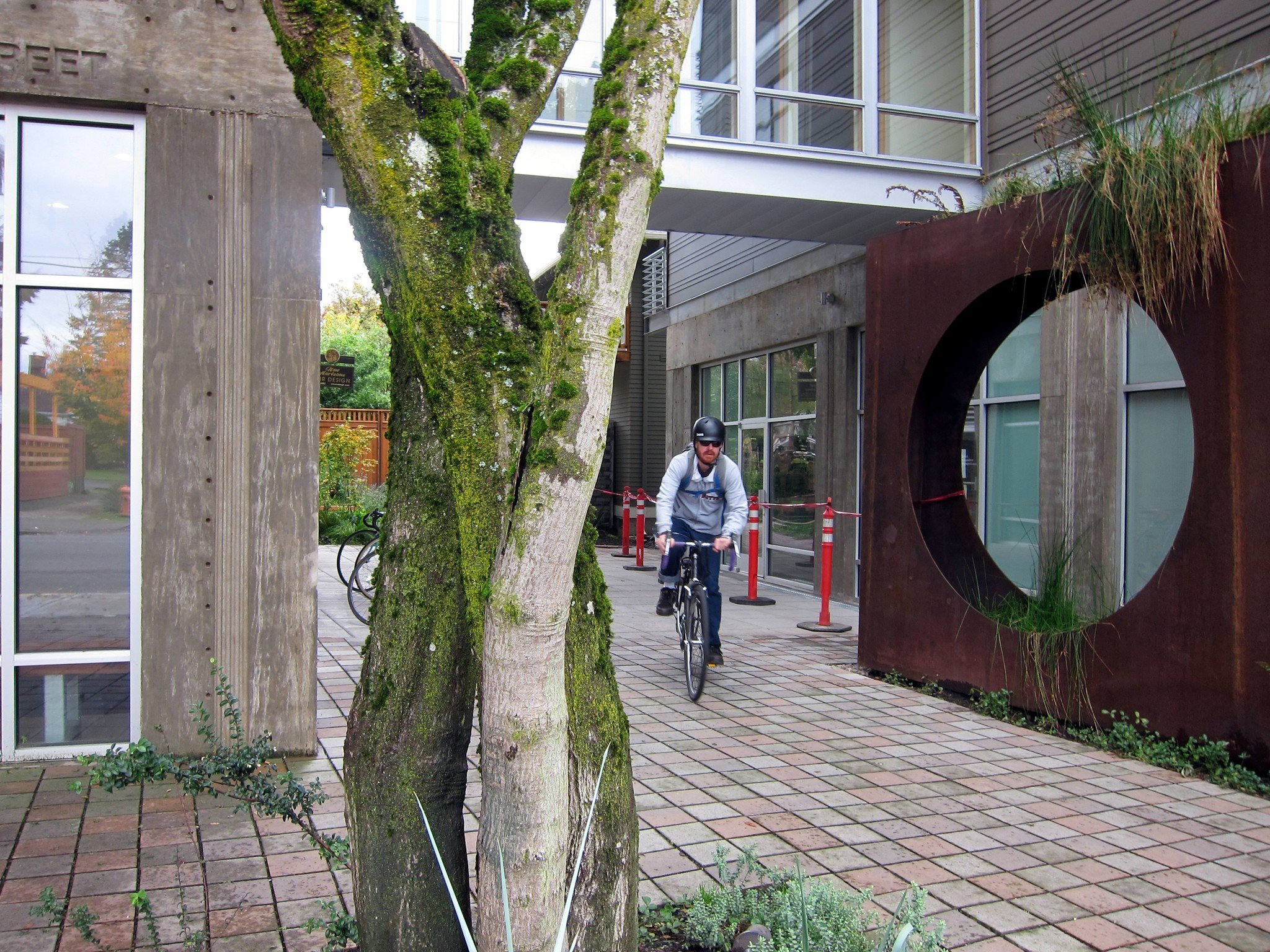Portland, Oregon, is adding residents faster than it almost ever has. Multnomah County has seen only two decades in its history with bigger booms: the 1900s and the 1940s.
But this time, something is almost certainly different: Portland is adding trees, too.
As noted last week by my colleague Dan Bertolet, there’s nothing inconsistent about a city adding more homes and more trees. Here in the Pacific Northwest, housing and tree growth can entwine—and in Portland, according to data Dan shared (and Willamette Week re-shared) it has been.
Portland parks bureau data show the share of the city covered by tree canopy steadily rising from 27 percent in 2000 to 31 percent in 2015. And the bureau noted that this growth is happening in the zones away from the parks, where the population boom is.
In response to Willamette Week‘s post, Iain MacKenzie, an associate at TVA Architects who moonlights as the publisher of development news site NextPortland.com, compiled a series of before-and-after Google Street View photos to show parts of the budding urban treescape that will continue to drive this trend in Portland over the decades to come.
Northwest Pettygrove Street, in 2012 and 2017:
Southwest River Parkway and Gaines, in 2009 and 2017:
Southwest 12th and Clay, in 2014 and 2017:
North Williams and Failing, in 2009 and 2016:
Northeast 99th and Glisan, in 2011 and 2014:
Northeast 41st and Tillamook, in 2011 and 2016:
Is this mostly because Portland developers are really into trees? Of course not. It’s because decades ago, Portland passed laws. There’s currently one requiring street trees alongside new buildings (one for every 25 continuous feet of street frontage) and one requiring a certain minimum density of tree canopy (old or new) on the site of new developments.
This adds costs, no question, and every dollar reduces the probability that much-needed housing is going to be created. (Part of Portland’s law is that a project can only be required to spend up to 10 percent of its budget on trees.) As always, it’s worth weighing the benefits of rules like these against the damage to rural forests and habitats if they unintentionally push new development to the urban fringe instead.
As Dan noted in his piece, focusing specifically on better street tree policies is a good way to get more trees without simultaneously limiting the number of people who can enjoy them. Portland is working on this.
Here is the bottom line: Trees are awesome. And if tree-friendly mandates and incentives make new development more politically popular, then everyone can win. The happy result of Portland’s current laws is that a population boom has, probably for the first time in its history, correlated with more trees, not fewer.


Comments are closed.